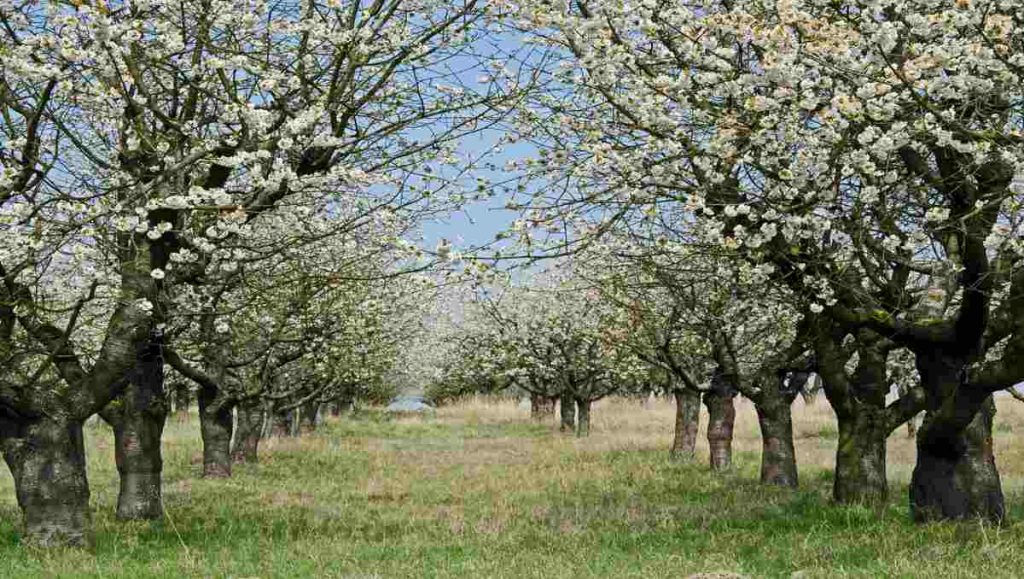
Choosing the right wood for your home’s furniture is an important decision. Among the many types of hardwoods available, cherry vs maple stand out as two top contenders. Both are revered for their aesthetic appeal and durability, but each brings unique characteristics to the table.
Key Takeaways
- Cherry wood offers timeless elegance, deepens in color over time, and has a subtle but striking grain pattern.
- Maple wood is known for its light, creamy color and smooth, straight grain, ideal for contemporary designs.
- Cherry is softer than maple but remains durable with its natural resistance to humidity and warping.
- Maple’s hardness makes it more resistant to scratches and dents, perfect for high-traffic areas.
This article will guide you through the differences between cherry and maple wood, helping you make the best choice for your home.
A Closer Look at Cherry Wood
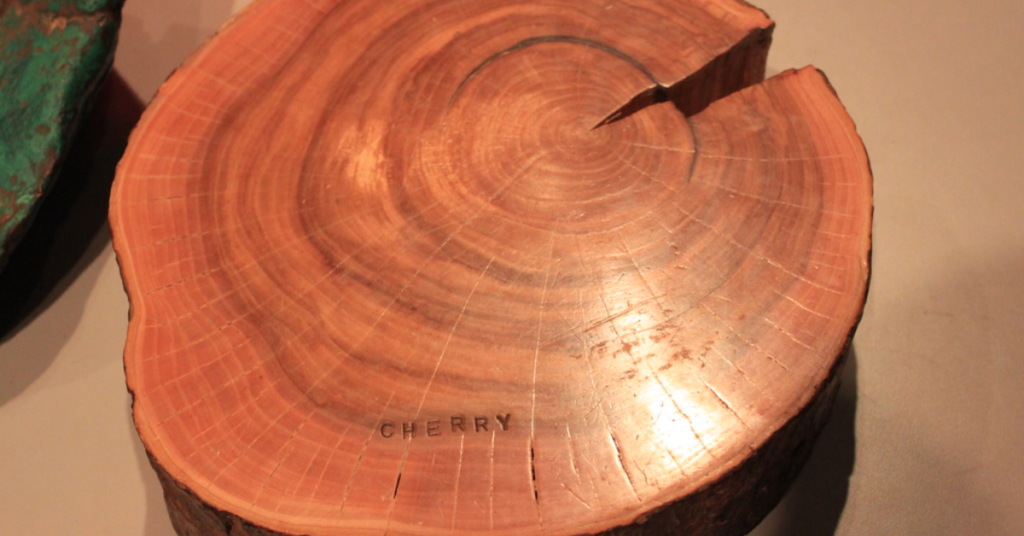
Cherry wood, known for its rich color and smooth grain, holds a special place in the world of woodworking. This hardwood comes from the American black cherry tree (Prunus serotina), a species native to North America. Typically found in the eastern regions of the United States, these trees thrive in forests stretching from the Appalachian Mountains to parts of the Midwest. Their ideal growing conditions include well-drained soils and a temperate climate, which contribute to the tree’s steady growth and the desirable characteristics of its lumber.
This geographic origin and growth environment give cherry wood its signature qualities—strength, fine texture, and a reddish-brown hue that deepens with time. Its reputation as a premium material has made it a top choice for high-end furniture, cabinetry, and musical instruments. Cherry wood is a popular choice in woodworking, celebrated for its unique aesthetic appeal and durability.
Aesthetic Appeal
Cherry wood exudes luxury and timeless beauty. It starts with a light brown or reddish-brown hue that deepens over time, developing a rich patina that adds character and value. Its subtle yet elegant grain complements a range of styles, from rustic to modern, making it a versatile choice for any space.
Durability and Longevity
Balanced in hardness, cherry wood withstands daily wear while being soft enough for intricate carvings. Its natural oils offer resistance to humidity and warping, though maintaining stable temperature and humidity levels helps preserve its beauty.
Understanding Maple Wood
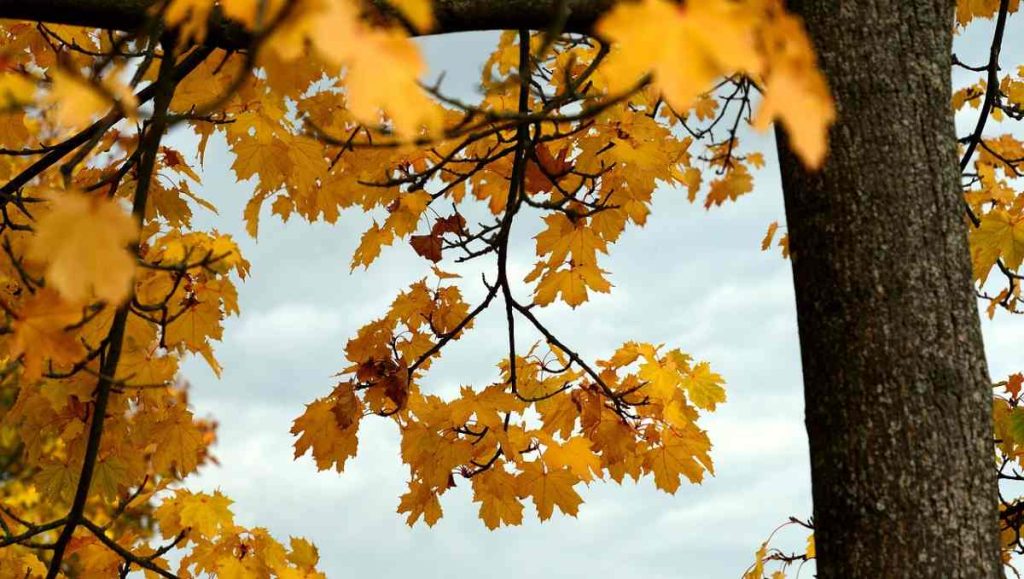
Maple wood, harvested from sturdy maple trees, is prized for its hardness and smooth grain. These trees are abundant in North America, and their wood is frequently used in furniture making due to its strength and light color.
Aesthetic Appeal
Maple wood offers a light, creamy color, perfect for contemporary designs. Its neutral tones blend effortlessly into modern spaces, while the smooth, straight grain adds a sleek, clean look. Maple can be stained in various shades, fitting both minimalist and rustic styles. Its light color pairs well with materials like glass, metal, and fabric, creating an open, airy feel for any room.
Exceptional Durability and Hardness
Maple ranks high on the Janka hardness scale, making it resistant to dents and scratches. Ideal for busy areas like kitchens and hallways, it withstands heavy use, pets, and children. Its durability ensures furniture made from maple can last for generations with minimal wear.
Cherry vs. Maple: A Direct Comparison
Cherry and maple are both prized hardwoods, each offering distinct characteristics that suit different design preferences and practical needs. Choosing between the two comes down to the atmosphere you want to create and how the furniture will be used over time.
Aesthetic Differences
Cherry wood captivates with its warm, reddish-brown tones that darken gracefully over time, developing a rich patina. Its smooth grain and understated elegance make it a favorite for both classic and contemporary furniture, adding character to formal and casual spaces alike.
Maple, on the other hand, brings a light, airy aesthetic with its pale, creamy hues and subtle grain patterns. It’s ideal for creating sleek, minimalist designs, often lending a modern touch to interiors. Maple’s ability to take stains well also allows for customization, making it adaptable to rustic, industrial, or contemporary styles.
Performance and Practical Use
While cherry is known for its moderate hardness, it offers a delicate balance between durability and workability, making it suitable for furniture that prioritizes aesthetics and moderate use. However, its softer nature means it can develop minor scratches or dents, which may blend into its evolving patina over time.
Maple excels in areas that demand toughness and long-term wear. Its high hardness makes it resistant to scratches, dents, and other signs of heavy use, making it ideal for furniture in busy households, such as dining tables, cabinets, or flooring. For high-traffic spaces or environments with pets and children, maple’s durability is a significant advantage.
Cost Considerations
Cost is another important factor when deciding between cherry and maple. Generally, cherry wood tends to be more expensive due to its popularity and the richness of its appearance. Its unique aging process also adds to its value, making it a worthwhile investment for furniture that you plan to keep for a long time.
Maple is often more budget-friendly and widely available, making it a practical choice for larger projects or when working within a tighter budget. However, the value for money should be measured not just in upfront costs but in the longevity and maintenance of the wood. Ultimately, whether you choose cherry or maple, you’re investing in quality craftsmanship that can enhance your home for years to come.
To give you a clearer idea about the strengths and weaknesses of each wood type, here’s an in-depth comparison table you can use as a guide:
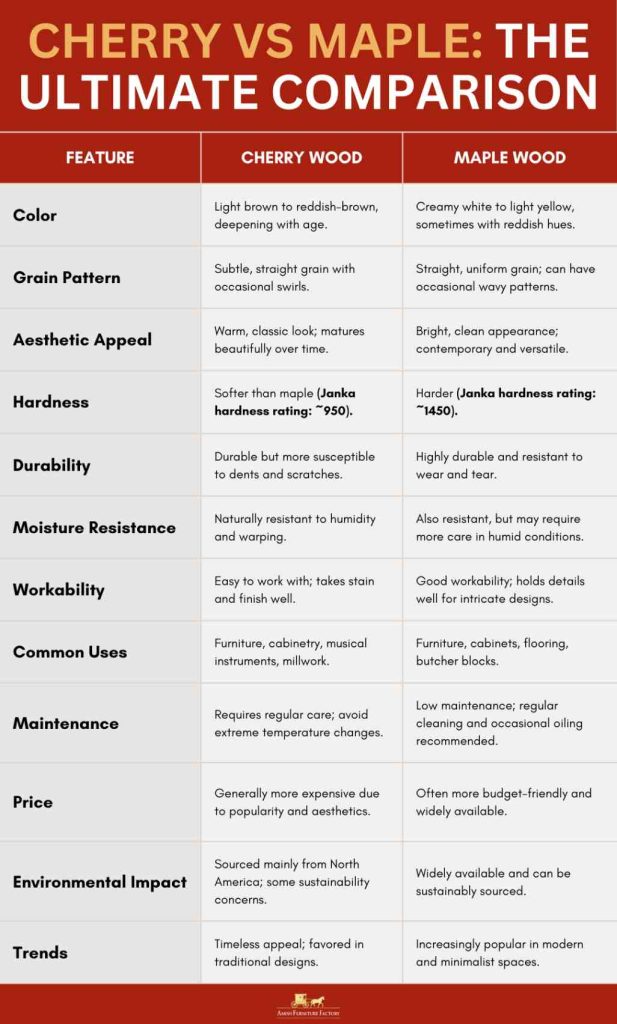
You might be interested in learning the difference between maple vs. walnut.
Choosing the Right Wood for Your Project
When deciding between cherry and maple wood, it’s important to consider several key factors that will influence both the appearance and functionality of your project.
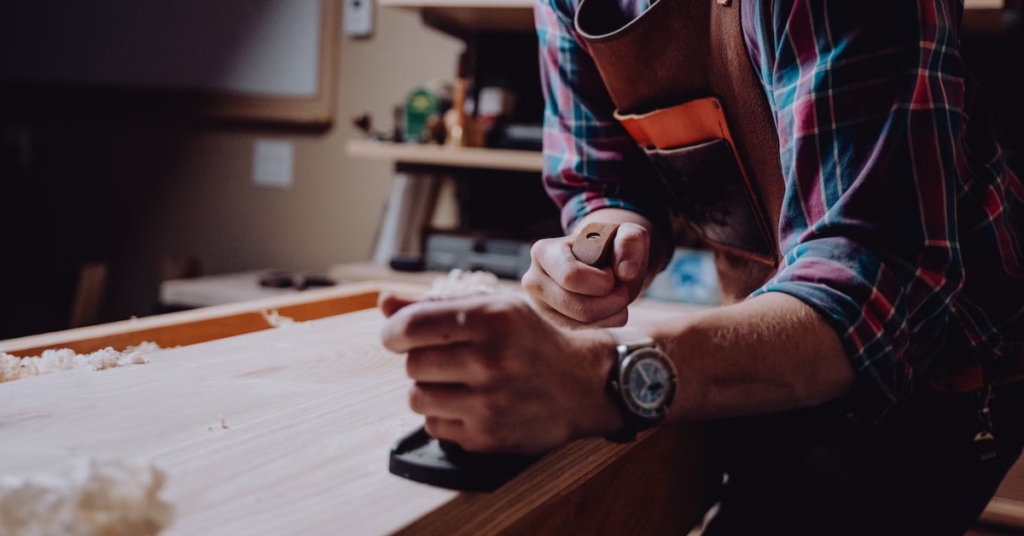
Project Type
Determine what you’re building—furniture, cabinetry, or wood flooring. Each application has different demands. For example, furniture that will be used frequently may benefit from the durability of maple, while cherry is often favored for cabinetry due to its rich color and elegance.
Desired Aesthetics
Think about the look you want to achieve. Cherry offers warm, inviting tones that deepen with age, creating a classic appeal. In contrast, maple provides a light, clean aesthetic that can complement modern designs.
Longevity
Consider how long you want your piece to last. If you’re investing in something for long-term use, durability is key. Maple is known for its toughness and resistance to wear, making it ideal for high-traffic areas, while cherry offers beauty that matures over time.
Also, remember that your personal taste is a significant factor in wood selection. Each wood type carries its unique character, and your choice should reflect your individual style.
Discover the perfect wood for your home! Dive deeper into the unique qualities of cherry vs maple and explore our exclusive collection at Amish Furniture Factory.
Conclusion
Whether you choose cherry for its rich color and elegant grain or maple for its bright, sleek look and durability, both woods offer distinct advantages. Cherry’s ability to age gracefully and develop a deep patina makes it perfect for traditional, heritage-inspired spaces, while maple’s strength and versatility make it ideal for modern, high-traffic areas. Your final choice will depend on your aesthetic preferences, the type of furniture you’re creating, and the level of durability you need.
FAQs
Can you mix cherry and maple wood in the same room?
Yes, mixing them can create a balanced contrast, with cherry adding warmth and maple providing brightness. Use one as the dominant wood and the other as an accent.
Which wood is better for kitchen cabinets, cherry vs maple?
Cherry is ideal for traditional, elegant kitchens, while maple is more durable and better suited for high-traffic, modern kitchens.
Does maple or cherry wood hold stain better?
Cherry darkens naturally and stains well, while maple can be trickier to stain evenly but offers more versatility with a range of finishes.
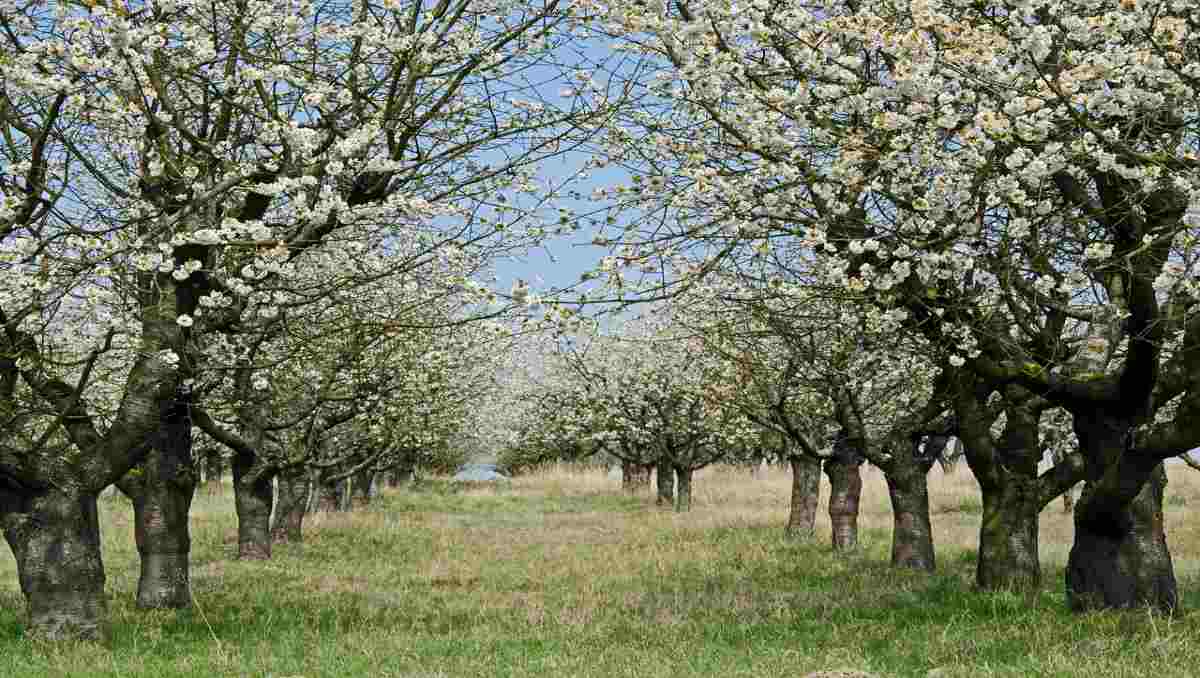
I work with both woods a lot. Cherry is easier to work with, but is much more susceptible to chipping and splinters on thin pieces then maple. I use maple for bed headboards and kitchen cabinets as it’s very very resistant to damage and it accepts stains much more uniform than cherry. Cherry also turns darker with age so that can be a big concern for something that’s in an area exposed to sunlight.